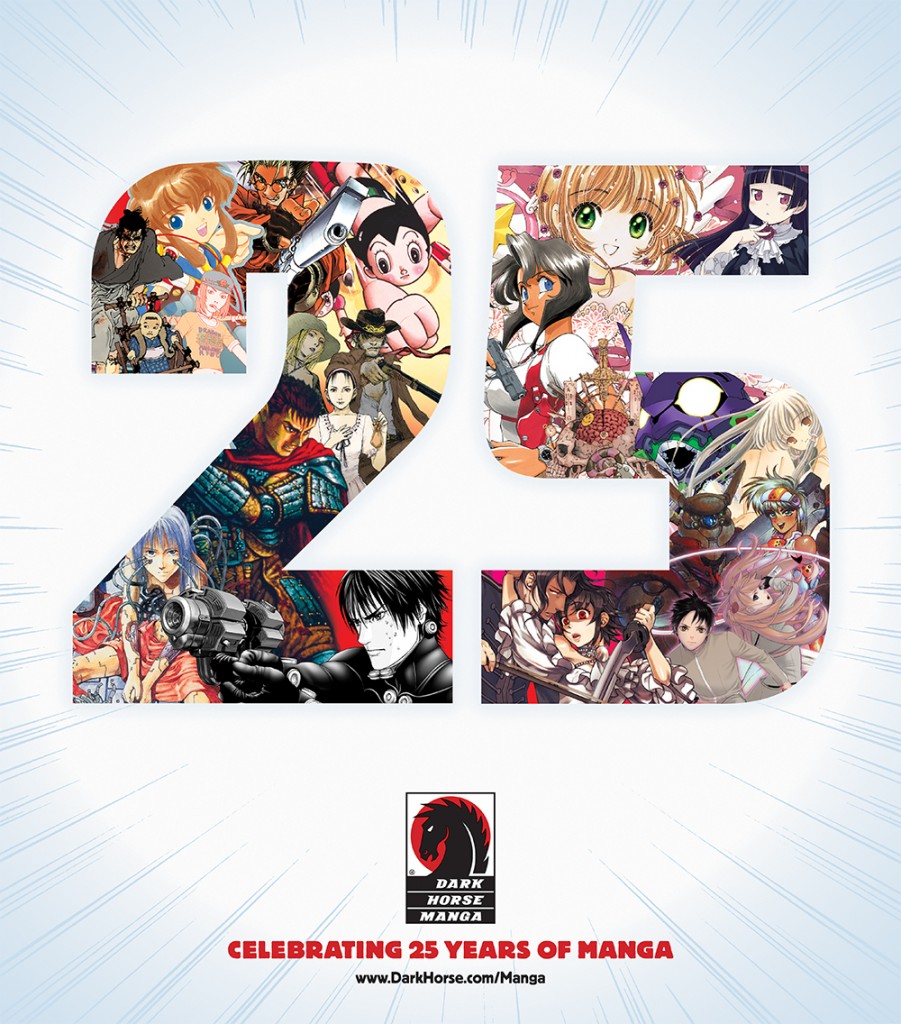March 2013 is Manga Month here at Dark Horse Comics. We’re celebrating 25 years of publishing some of the best and most exciting Manga in the industry. We’re proud to partner with Manga greats like Amano, CLAMP, Hiroya Oku, Yasuhiro Nightow, Kohta Hirano and so many more! We’ve also been publishing english editions of the longest running Manga in publishing, Oh My Goddess. We hope you join us during this month to share your favorites and thoughts on MANGA. Our Manga expert extraordinaire and editor, Carl Horn, details our history and what we’re celebrating.
It began as it usually does—with Godzilla rising from the sea. Dark Horse’s first manga, published twenty-five years ago this May, was Kazuhisa Iwata’s adaptation of the 1984 Godzilla movie. It was edited and adapted into English by the founder and president of the company, Mike Richardson, and its vice president of publishing, Randy Stradley. Looking back, the choice seems to pay tribute to the original generation of Japanese pop culture fans in North America, whom they represent. After all, anime’s been on TV here since 1963, but as far back as the 1950s young Americans were thrilling to Japanese kaiju (giant monster) films that were dubbed in English for US theaters, such as Godzilla and Rodan. The tremendous success of the Neon Genesis Evangelion franchise (from which Dark Horse’s latest release, Evangelion: Comic Tribute, is out in March) has encouraged some of today’s fans to rediscover the kaiju tradition, which remains an important influence on the work of Evangelion director Hideaki Anno.
That brings us right around to anime, which issue #1 of Godzilla already had a nod to. I noticed the ad on the last page that promoted a Dark Horse comic book series that had begun just the year before entitled Mecha,promising a story “in the tradition of Mobile Suit Gundam.” What struck me is that Dark Horse was saying this in 1988—ten years before Gundam had its first US home video release, and twelve years before anyGundam would be broadcast on TV here. But Mecha’s writer (Randy Stradley once more, with pencils and mecha designs by Harrison Fong) was already building Gundam models back then, and he was confident the kind of fans who read Dark Horse would know what he meant; Randy’s editorial on the inside front cover ofMecha #1 felt free to mention not only Gundam, but Macross, Dunbine, and Orguss as influences. Mecha, in fact, was Dark Horse’s very first comic book to be published in color.
Dark Horse is unusual among North American manga companies for its strong tradition of comic book publishing. But that’s the very tradition that launched manga here—all through the 1980s and ’90s, the standard industry format for manga publishing in English involved putting one or two new chapters out each month as a comic book, and we still publish series such as Oh My Goddess! and Blade of the Immortal that began that way. It may seem a strange way to publish manga now, and yet, it had a certain authenticity to the way manga are published in Japan, where they aren’t released straight to tankobon (graphic novel) format, but are instead serialized chapter by chapter in magazines that have page sizes more similar to American comics than tankobon. When I look back over the space of a quarter century to that first issue of Godzilla, the fact that our first manga looked like our first comic books takes on a special meaning—it symbolizes how they were right alongside each other in our founding years, and how they both remain at the core of our identity as a publisher. You’ll be hearing a lot more about it in this, Dark Horse’s twenty-fifth manga anniversary year.

